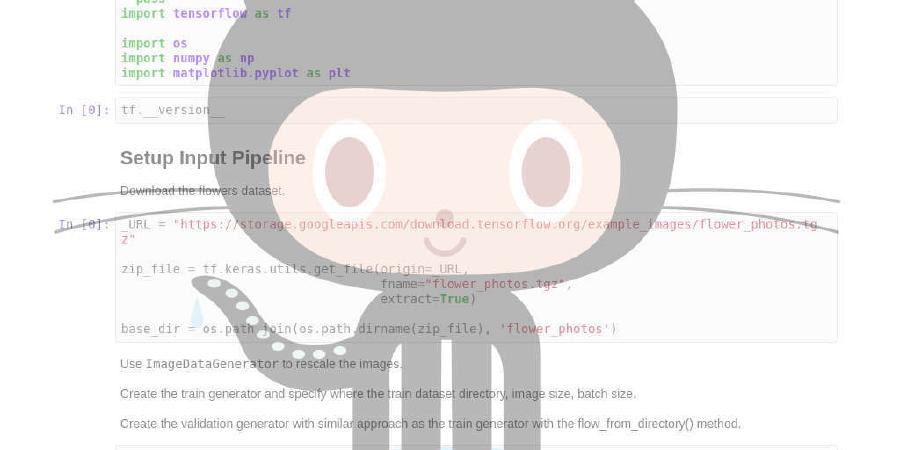kumar-shridhar/PyTorch-BayesianCNN

Bayesian Convolutional Neural Network with Variational Inference based on Bayes by Backprop in PyTorch.
| repo name | kumar-shridhar/PyTorch-BayesianCNN |
| repo link | https://github.com/kumar-shridhar/PyTorch-BayesianCNN |
| homepage | |
| language | Python |
| size (curr.) | 69357 kB |
| stars (curr.) | 491 |
| created | 2018-07-27 |
| license | MIT License |
Bayesian CNN with Variational Inference
We introduce Bayesian convolutional neural networks with variational inference, a variant of convolutional neural networks (CNNs), in which the intractable posterior probability distributions over weights are inferred by Bayes by Backprop. We demonstrate how our proposed variational inference method achieves performances equivalent to frequentist inference in identical architectures on several datasets (MNIST, CIFAR10, CIFAR100) as described in the paper.
Filter weight distributions in a Bayesian Vs Frequentist approach

Fully Bayesian perspective of an entire CNN

Make your custom Bayesian Network?
To make a custom Bayesian Network, inherit layers.misc.ModuleWrapper instead of torch.nn.Module and use layers.BBBLinear.BBBLinear and layers.BBBConv.BBBConv2d instead of torch.nn.Conv2d and torch.nn.Linear. Moreover, no need to define forward method. It’ll automatically be taken care of.
For example:
class Net(nn.Module):
def __init__(self):
super().__init__()
self.conv = nn.Conv2d(3, 16, 5, strides=2)
self.bn = nn.BatchNorm2d(16)
self.relu = nn.ReLU()
self.fc = nn.Linear(800, 10)
def forward(self, x):
x = self.conv(x)
x = self.bn(x)
x = self.relu(x)
x = x.view(-1, 800)
x = self.fc(x)
return x
Above Network can be converted to Bayesian as follows:
class Net(ModuleWrapper):
def __init__(self):
super().__init__()
self.conv = BBBConv2d(3, 16, 5, strides=2, alpha_shape=(1,1), name='conv')
self.bn = nn.BatchNorm2d(16)
self.relu = nn.ReLU()
self.flatten = FlattenLayer(800)
self.fc = BBBLinear(800, 10, alpha_shape=(1,1), name='fc')
Notes:
- Add
FlattenLayerbefore firstBBBLinearblock. forwardmethod of the model will return a tuple as(logits, kl).- Keyword argument
nameis optional and is required to use only when recording mean and variances in turned ON.
How to perform standard experiments?
Currently, following datasets and models are supported.
- Datasets: MNIST, CIFAR10, CIFAR100
- Models: AlexNet, LeNet, 3Conv3FC
Bayesian
python main_bayesian.py
- set hyperparameters in
config_bayesian.py
Frequentist
python main_frequentist.py
- set hyperparameters in
config_frequentist.py
Recording Mean and Variance:
If record_mean_var is True, then mean and variances for layers in record_layers list will be logged in checkpoints directory. Recording frequency per epoch can be defined. All these mentioned parameters can be modified in the config_bayesian.py file.
DistPlots



LinePlots


Notes:
- The recording will only take place during the training phase of the model.
- Choose
recording_freq_per_epochas a multiple of number of training iterations. It’s not necessary but this will record exactly that many times.
Example: fornum_iteration = 96,recording_freq_per_epoch = 48. Therefore,step_sizewill be 2 and will record exactly 48 times.
But fornum_iteration = 96,recording_freq_per_epoch = 49. Therefore,step_sizewill be 1 and will record 96 times. - Choosing
recording_freq_per_epochhigher than number of training iterations will raiseZeroDivisionError.
In order to visualize the recorded values, visualize_mean_var.py contains draw_distributions and draw_lineplot methods. Following are the arguments which needs to be passed to visualize_mean_var.py:
--filename: Path to log file.--data_type: Draw plots for what?mean,stdorboth? Default is'mean'.--node_no: Index of the node for which to draw plots. Index is after flattening of the layer. Default is 0 i.e, first node.--plot_type: Which plot to draw? Currently we support lineplot and distplot. Default is'lineplot'.--plot_time: Pauses the plot for this much amount of time before updating it. Default is 1 second.--save_plots: Whether to save plots or not. Default is 0 for No. 1 is for Yes.--save_dir: Directory for saving plots. Must end with'/'. If not provided, default directory will befilename_directory/plots/.
Directory Structure:
layers/: Contains ModuleWrapper, FlattenLayer, Bayesian layers (BBBConv2d and BBBLinear).
models/BayesianModels/: Contains standard Bayesian models (BBBLeNet, BBBAlexNet, BBB3Conv3FC).
models/NonBayesianModels/: Contains standard Non-Bayesian models (LeNet, AlexNet).
checkpoints/: Checkpoint directory for the best model will be saved here.
tests/: Basic unittest cases for layers and models.
main_bayesian.py: Train and Evaluate Bayesian models.
config_bayesian.py: Hyperparameters for main_bayesian file.
main_frequentist.py: Train and Evaluate non-Bayesian (Frequentist) models.
config_frequentist.py: Hyperparameters for main_frequentist file.
visualize_mean_var.py: Plotting Distributions and Line graphs of mean and variances.
If you are using this work, please cite the authors:
@article{shridhar2019comprehensive,
title={A comprehensive guide to bayesian convolutional neural network with variational inference},
author={Shridhar, Kumar and Laumann, Felix and Liwicki, Marcus},
journal={arXiv preprint arXiv:1901.02731},
year={2019}
}








